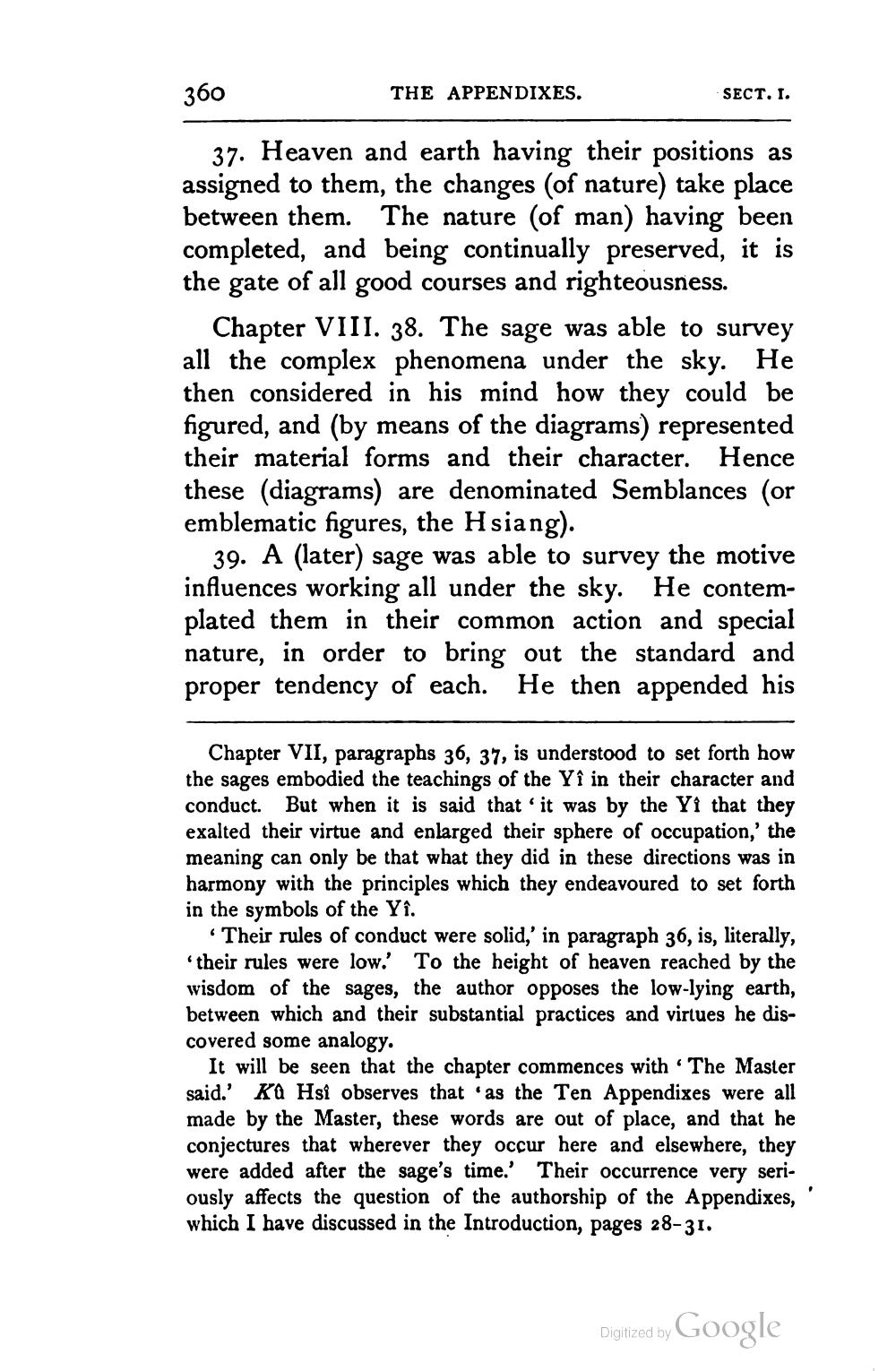________________
360
THE APPENDIXES.
SECT. I.
37. Heaven and earth having their positions as assigned to them, the changes (of nature) take place between them. The nature (of man) having been completed, and being continually preserved, it is the gate of all good courses and righteousness.
Chapter VIII. 38. The sage was able to survey all the complex phenomena under the sky. He then considered in his mind how they could be figured, and (by means of the diagrams) represented their material forms and their character. Hence these (diagrams) are denominated Semblances (or emblematic figures, the H siang).
39. A (later) sage was able to survey the motive influences working all under the sky. He contemplated them in their common action and special nature, in order to bring out the standard and proper tendency of each. He then appended his
Chapter VII, paragraphs 36, 37, is understood to set forth how the sages embodied the teachings of the Yî in their character and conduct. But when it is said that it was by the Yi that they exalted their virtue and enlarged their sphere of occupation,' the meaning can only be that what they did in these directions was in harmony with the principles which they endeavoured to set forth in the symbols of the Yî.
* Their rules of conduct were solid,' in paragraph 36, is, literally, their rules were low. To the height of heaven reached by the wisdom of the sages, the author opposes the low-lying earth, between which and their substantial practices and virtues he discovered some analogy.
It will be seen that the chapter commences with The Master said.' Ka Hsi observes that as the Ten Appendixes were all made by the Master, these words are out of place, and that he conjectures that wherever they occur here and elsewhere, they were added after the sage's time.' Their occurrence very seriously affects the question of the authorship of the Appendixes, which I have discussed in the Introduction, pages 28-31.
Digitized by Google




